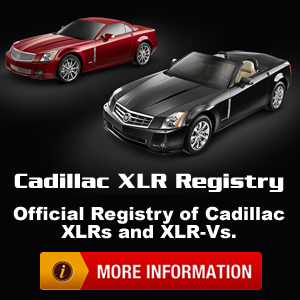Are you the new owner of an XLR or have you had it for a while (and driven it for at least a few hundred miles)? The following bulletin explains how the transmission shift points adapt to the drivers style of driving. You may find it improves as you drive it more.
Operating Characteristics of 5L40E / 5L50E Transmissions - kw accelerate adapt aggressive apply automatic cruise decelerate delay drive early excessive flare fifth first fourth hard harsh hesitate #PIP3091A - (Aug 11, 2004)
Operating Characteristics of 5L40E/5L50E Transmissions
.
The following diagnosis might be helpful if the vehicle exhibits the symptom described in the PI.
<A href="http://127.0.0.1:9001/servlets/BlobShtml?ShtmlFile=1544700&pubid=423&evc=sm#ss1-1544700">Condition/Concern:
Cadillac customers may comment about unusual shifting characteristics exhibited by vehicles equipped with the 5L40E or 5L50E.
<A href="http://127.0.0.1:9001/servlets/BlobShtml?ShtmlFile=1544700&pubid=423&evc=sm#ss2-1544700">Recommendation/Instructions:
The Hydra-Matic 5L40E/50E automatic transmissions have some unique operating characteristics that customers may not be familiar with. They have been designed to provide more of a manual transmission feel than other Hydra-Matic automatic transmissions. These transmissions are used in 2005 Cadillac STS and 2004-05 Cadillac CTS, SRX, and XLR. Here are descriptions of the unique operating characteristics.
Normal Mode Operation (CTS, SRX, STS, XLR) -- During normal mode operation, drivers may notice increased powertrain braking after releasing the accelerator pedal. The vehicle will not coast freely when the accelerator pedal is released but will start to gradually slow down as if the brakes were lightly applied. This feels very similar to releasing the accelerator pedal on a vehicle equipped with a manual transmission.
Sport Mode Operation (CTS, SRX and STS) -- Typically, Sport mode delays upshifts. The Sport mode simulates the performance driving of a manual transmission. Under certain conditions, the vehicle will maintain specific gears longer than a traditional automatic would. When driving in Normal mode in 5th gear, depressing the Sport button causes an immediate 5-4 downshift, which will be maintained for ten seconds. In any other gear, no downshift takes place when Sport is engaged. In Sport mode, the vehicle has firmer shifting and increased performance, and the transmission may remain in a gear longer than it would in Normal mode.
Driver Shift Control (DSC) (SRX, STS, XLR) -- The driver manually overrides the automatic gear selection. Various mechanization options for input device and degree of override allowed.
Performance Algorithm Shifting (PAS) (XLR and 2004 SRX) -- Override of usual automatic gear selection during closed throttle high lateral acceleration maneuver. Lower gear is accompanied by near synchronous engine speed control for quick response upon re-opening throttle (enable threshold bias in Sport mode). TIP: On SRX, this feature is enabled in Sport. On XLR, it is always enabled.
Performance Algorithm Liftfoot (PAL) (CTS, SRX, STS, XLR) -- Prevents liftfoot upshifts while maintaining engine braking during repeated aggressive cornering.
Winter Mode (CTS) -- The vehicle launches in 2nd or 3rd gear instead of 1st, to avoid wheel spin in snow or ice, if selected by the driver.
Shift Stabilization (CTS, SRX, STS, XLR) -- Shift stabilization is used to minimize shift busyness, or hunting between ranges. Based on several inputs and a map of engine torque at various RPM and throttle position, the TCM determines before making an upshift whether the engine will be able to maintain vehicle speed in the next higher range. If it calculates that it cannot maintain speed, it will prevent the upshift from occurring.
Downgrade Detection Brake Assist (CTS, SRX, STS, XLR) -- Shift to lower gear with braking on downgrade based on fuzzy logic rules calculated from a thermal brake model, terrain detection, desired acceleration, vehicle speed, and mass detection.
Adapts (CTS, SRX, STS, XLR) -- Continual comparison of actual shift times to desired shift times. The transmission controls make hydraulic adjustments to assure the actual shift times approach the ideal shift time the next time the shift is made for similar operating conditions of vehicle rpm, engine load, and road load conditions. The adaptive shift process continues for the life of the vehicle, to provide consistent and optimized shifts.
.
Please follow this diagnosis process thoroughly and complete each step. If the condition exhibited is resolved without completing every step, the remaining steps do not need to be performed. If these steps do not resolve the condition, please contact GM TAC for further diagnostic assistance.
<A href="http://127.0.0.1:9001/servlets/BlobShtml?ShtmlFile=1544700&pubid=423&evc=sm#ss3-1544700">Models:
(04-05 Cadillac CTS) and ( 04-05 Cadillac SRX) and (05 Cadillac STS) and (04-05 Cadillac XLR)




